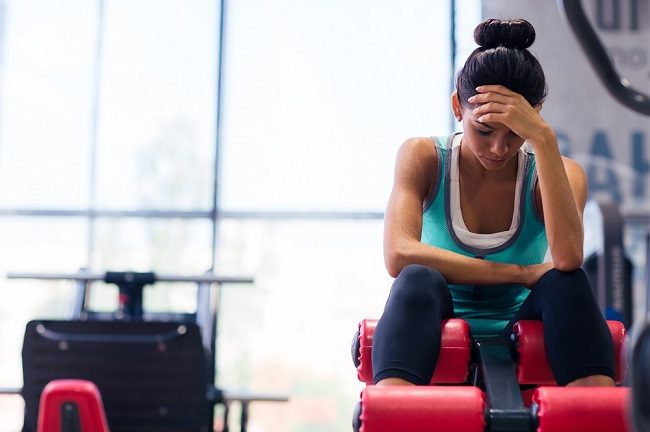No matter who you are – an athlete, an amateur bodybuilder or perhaps just someone trying to go for your daily jog, stretching is one of the first things you learn to do before moving onto the real thing. In fact, stretching is such an integral part of our routine that most of us do it without even understanding it’s actual importance or even the basic mechanics. Whoever you are, a pro or a novice, in this article we have covered all the information related to this indispensable part of your workout, including why should you stretch and when. So come, let’s examine the topic of stretching more closely.
Why Should You Stretch – The Importance & Mechanics?

Every movement that your body performs, including movements like lifting heavy weights or sprinting, is a function of muscles, which is a part of the larger musculoskeletal system comprising of the bones, joints, muscles, ligaments and, tendons. When your muscles are at rest for long periods of time, they react by shortening and tightening up, which in turn, results in a marked decrease in mobility and flexibility. Studies have shown that on an average, people spend close to 10 hours sitting down every day and another 7 hours sleeping – that’s 17 hours of inactivity every day!

When you stretch your body, the muscles fibres elongate which increases your range of motion and flexibility. Besides the flexibility, stretching is key to your workout recovery. You see, when muscle fibres have reached their largest degree of resting length, the extra tension forces the disarrayed muscle fibre to align themselves in the line of tension. This is crucial for tissue’s rehabilitation post workout. Stretching also increases your blood circulation which helps deliver oxygen and nutrients to the various muscles and organs in the body.
Some of the other benefits of stretching include:
- Better posture: When you stretch your body, the muscles located on your lower back, chest and, shoulders stretch too and help you maintain a better alignment of your back and overall posture.
- Reduced stress on the body: Stretching your muscles releases tension from your muscles. Generally, it has been observed that stretching a muscle for 3-5 seconds can work wonders in releasing muscular tension.
- Improved efficiency: When your body is flexible, it requires a lot less energy to go through the various ranges of motion. Thus, when you stretch your body, your overall performance also goes up and your movements are more energy efficient.
- Lowered risk of lower-back pain: Stretching your back, especially the hamstrings, hip-flexors and the pelvic muscles helps relieve stress on the lumbar area. This significantly reduces the risk of lower back pain.
- Reduced risk of muscle soreness: Post workout stretching helps keep your muscles loose. This helps you avoid the post-workout soreness which is usually the result of shortening and tightening effect.
- Prepares the body for exercise: Pre-workout Stretching helps your body become more flexible while increasing the range of motion and increasing blood circulation in the body. This prepares your body for the stress of exercise.
Now let’s discuss about the types of Stretching!
Types of Stretching

Now that we have examined the importance and mechanics of stretching, let’s have a look at the various types of stretches. Here you go:
Ballistic Stretching: Ballistic stretching involves rapid movements which engage muscles and joints beyond the normal range of motion, which in turn improves your flexibility. Ballistic stretching is considered somewhat unsafe, especially for beginners due to the high risk of injury. Some of the examples include standing lunge, bounce and jerk, etc.
Dynamic Stretching: Just like Ballistic Stretching, Dynamic Stretching too involves moving your body parts. However, unlike Ballistic Stretching, the movements in dynamic stretching are controlled and does not exceed the limits of the range of your motion. Instead of relying on bouncing or jerking, dynamic stretching is relatively slow and deliberate. Dynamic stretching is popular since it challenges your balance, coordination, and increases the body’s awareness. Some of the examples include lunge with a twist, knee to chest, high kicks, hip stretch with a twist and others.
Active Stretching: This is also referred to as “static-active stretching”. In Active Stretching, you assume a position and hold on to it using only the actively contracting muscle. A simple example of Active Stretching would be bringing your leg high up and keep the leg in that extended position using nothing apart from the leg muscles themselves. Active stretching increases flexibility and strength of the contracting muscle. It also prepares the target muscles for action by warming them up.
Passive (or Relaxed) Stretching: Passive Stretching is also referred to as “static-passive stretching”. For passive stretching, you would be using assistance like as strap, gravity or even another partner in order to achieve a stretch. One of the best examples is partner assisted stretching exercises. They are great at relieving muscle spasms and cooling down after a workout.
Static Stretching: This is the most commonly used form of stretching. A safe and effective technique to improve your overall flexibility, in Static Stretching, the stretched muscle is held in a challenging yet comfortable position for a period of time which can vary from 10 to 30 seconds. While it is widely used in the fitness circles, the opinion on the effectiveness of Static Stretching vs. Dynamic Stretching is currently a subject of debate between experts.
Isometric Stretching: Isometric Stretching is a variation of static stretching involving resistance of muscles achieved through isometric contractions of the target muscle. This is one of the fastest ways of increasing static-passive flexibility. In fact, it is considered more effective than passive or active stretching. Due to its demanding nature on the muscle tendons, it is highly advised that isometric stretching is confined to only once per day per muscle group.
PNF Stretching: PNF or Proprioceptive Neuromuscular Facilitation is a technique that combines passive stretching and isometric stretching to facilitate maximum static flexibility. Currently, it has emerged as the fastest and most effective way to enhance the body’s static-passive flexibility. Initially developed as a method of rehabilitating stroke victims, in PNF technique the target muscle group is passively stretched and then allowed to contract isometrically.
5 Pre Workout Stretches For You
This article is incomplete without a demonstration. Here’s a video which shows 5 stretches that you can try anywhere and anytime.
You may also like: A Complete guide on How to use Equipment in Gym
Conclusion:
While words like “gains”, “pumping iron”, “blasting calories” have entered the lexicons of most fitness enthusiasts, stretching, despite being a staple for many enthusiasts, still remains one of the most overlooked topics. We hope this article will be able to change all that and spark the much-needed conversation about stretching. Till then stay fit and stay happy!


 Traqade
Traqade































[…] You may also like: Everything You Wanted To Know About The Art of Stretching […]
[…] You may also like: Everything You Wanted To Know About The Art of Stretching […]
[…] yoga for decrease again ache comparable to stretching, strengthening, and conditioning exercises additionally assist construct stronger muscle mass and […]
That sounds amazing. Besides, I think geometry dash lite is interesting, so try it out!
This is a very interesting topic! Stretching is a real art that not only improves the flexibility of the body, but also helps relieve tension after a hard day. I especially like to combine stretching with breathing practices – then the effect is even more noticeable. Do you happen to know any interesting online entertainment platforms? I’d like to find something new to do in my free time
I totally get what you mean — stretching with breathing practices is such a great way to let go of tension and reconnect with your body after a long day. It’s one of those small habits that can really shift your mood and energy levels.If you’re in the mood for something new online, I’d recommend taking a look at https://stilltimegame.com/ — it’s connected to a platform known for its user-friendly features, strong privacy tools, and quick service. The site offers a wide selection of interactive experiences developed by trusted tech partners, and you can try things out casually or explore deeper when you feel like it. Definitely a nice change of pace!